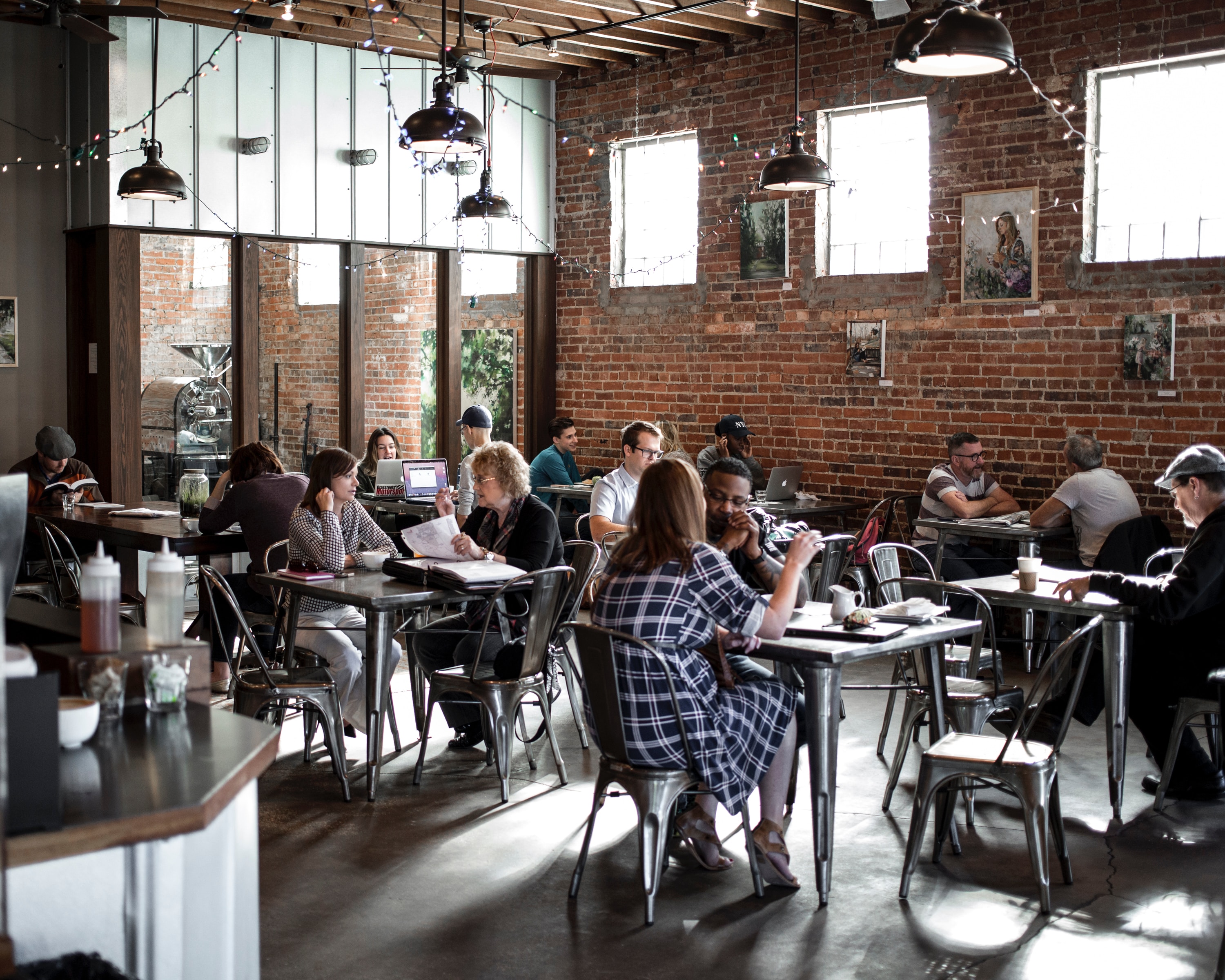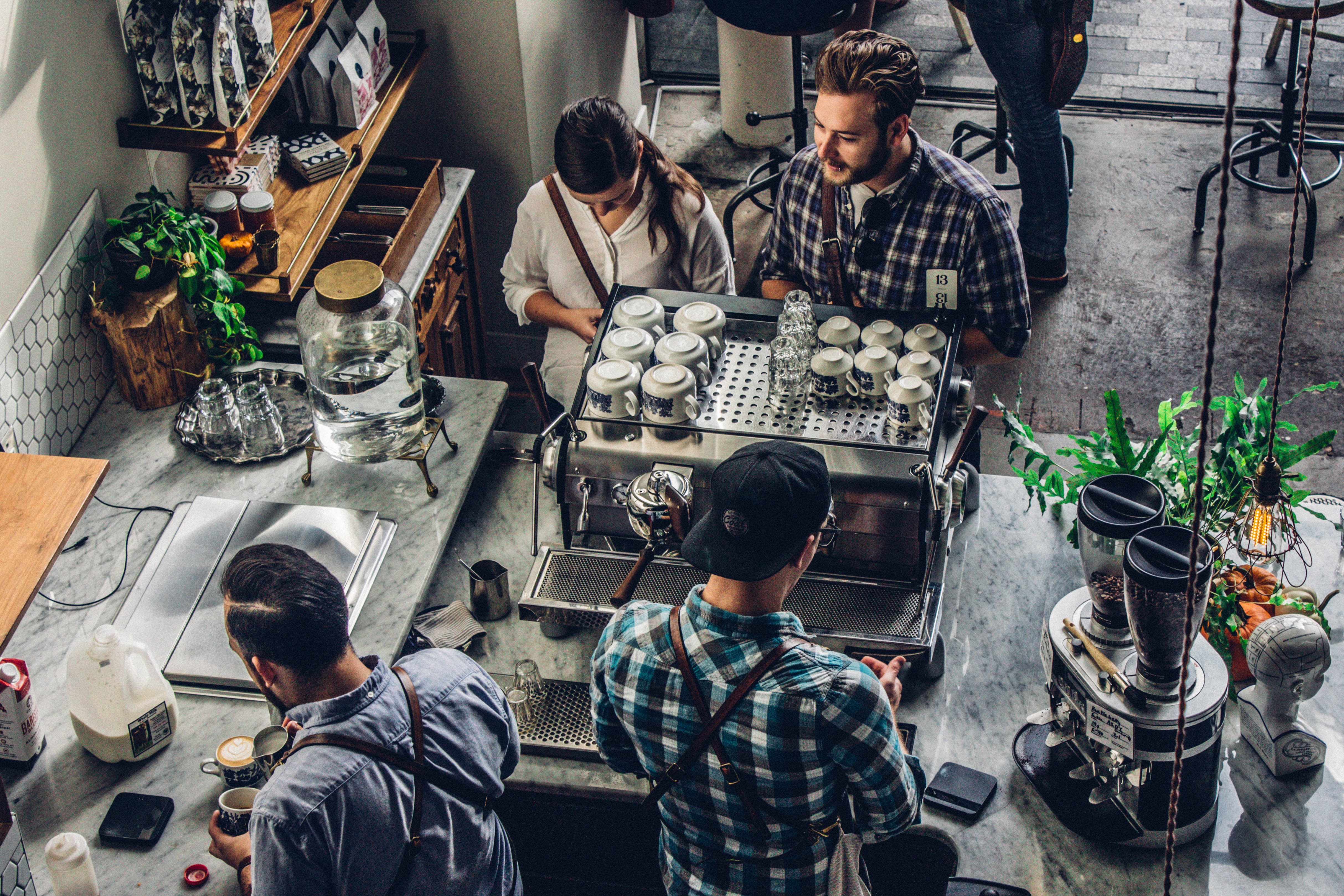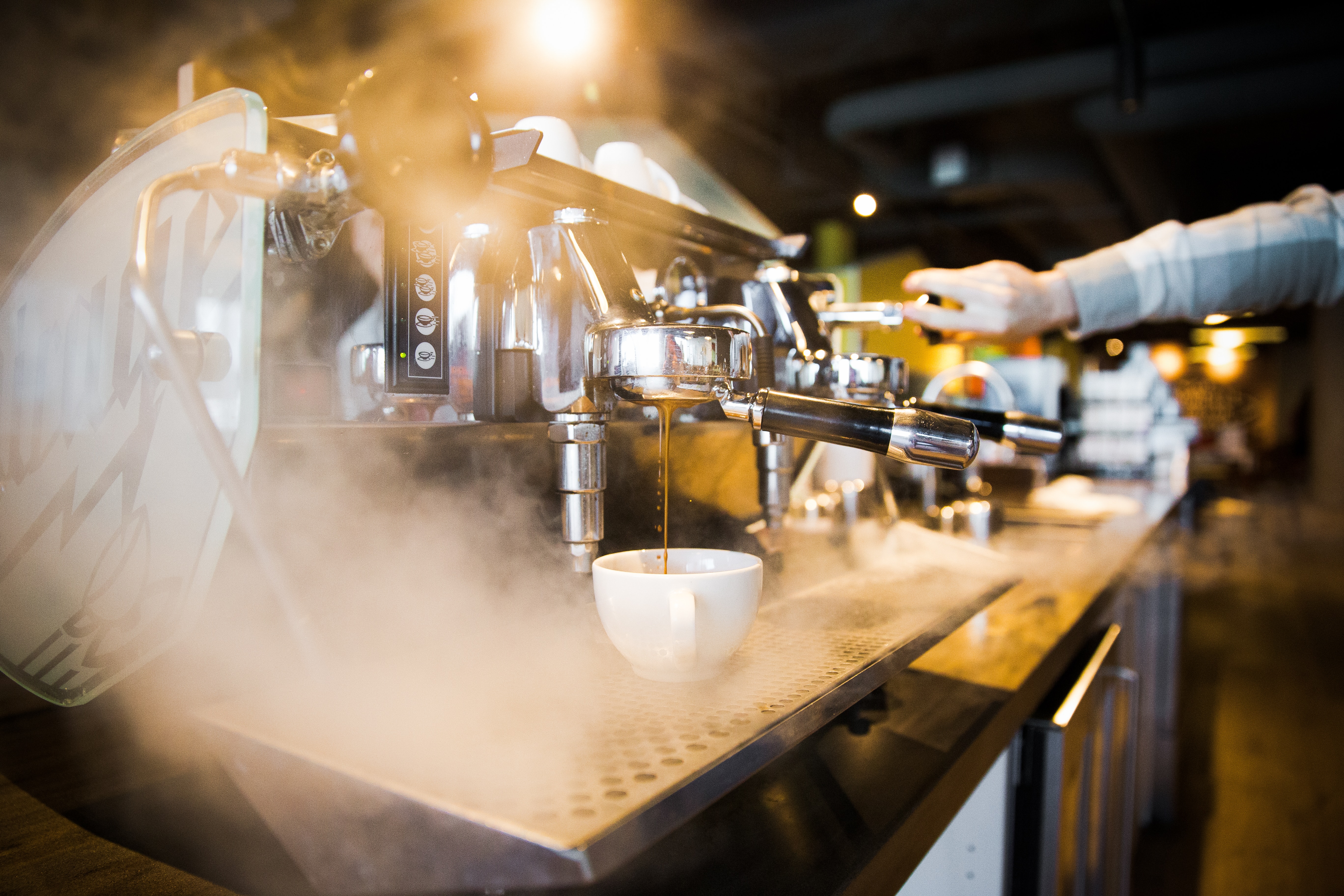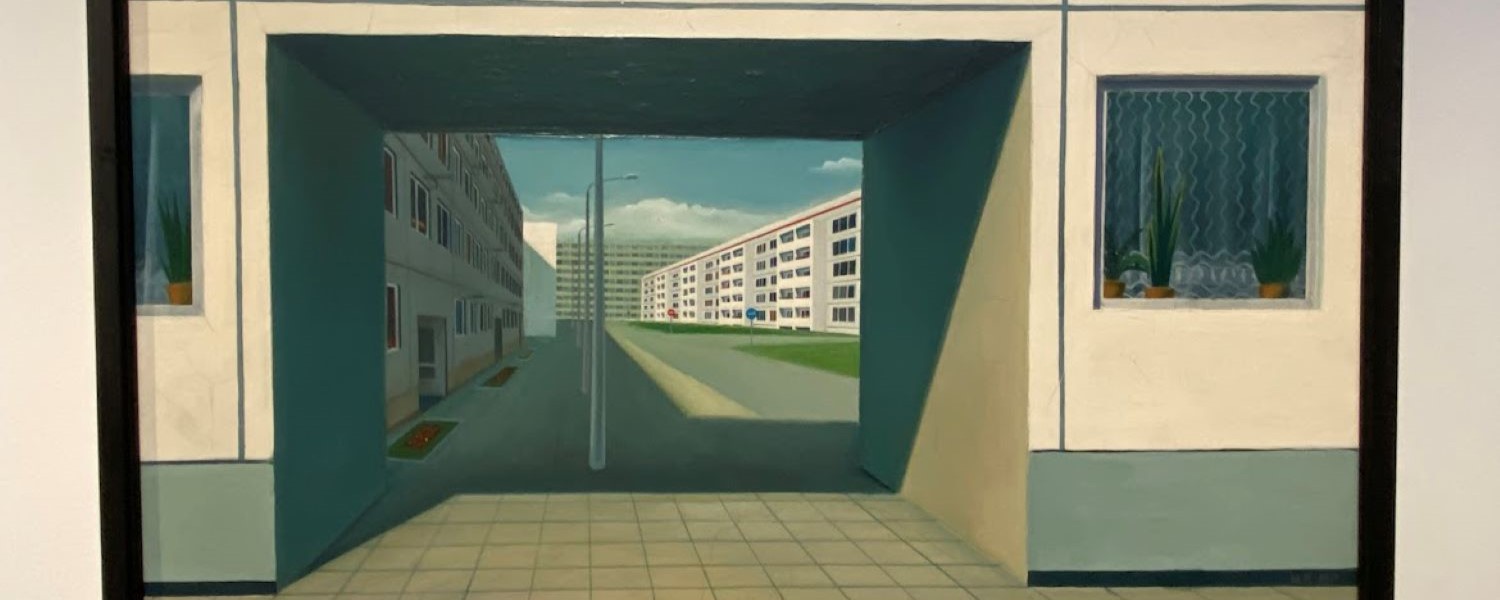
By Steve MacDouell
If you were to walk into my neighbourhood coffee shop, you’d see the usual suspects: Joey, a body and mind professional, who would be talking to someone about Finnish saunas, metal music, and the human condition; Arielle, the local city councillor, who would be conversing with her constituents about their ideas and hopes for the neighbourhood; Alexis, a writer, who would be sipping an americano, plugging away at her book, and scrolling through funny dog gifs; and Brittney, Jen, and Emily, three friends who, on a weekly basis, come together to talk about the joys and complexities of life all the while trying to keep their pre-school aged children occupied. This coffee shop, like many others, is a place where people are invited to sit, to catch up on some email, and to, potentially, encounter a few of their neighbours — all while enjoying a hot, caffeinated beverage.
Third places — that is, places where people can enjoy the company of others outside of their workplaces and homes — are critical to the well-being of our neighbourhoods. From public parks and libraries to pubs and playgrounds, these places are impacting our localities in both subtle and significant ways. For our communities to thrive, we need third places where ideas can be shared, where everyone is welcome to belong, and where relationships, over time, can be fostered. Ray Oldenburg, urban sociologist and author of The Great Good Place, emphasizes the importance of these kinds of places in this way:
“Most needed are those ‘third places’ which lend a public balance to the increased privatization of home life…Though a radically different kind of setting from the home, the third place is remarkably similar to a good home in the psychological comfort and support that it extends…They are the heart of a community’s social vitality, the grassroots of democracy.”
After a few years of sitting in the same coffee shop, I’ve come to realize that third places have much to teach us about our neighbourhoods and the people we share them with.
In the spirit of celebrating the third places in our cities, here are three things that I’ve learned in my local coffee shop:
 People want to linger in places where they can be seen, heard, and known
People want to linger in places where they can be seen, heard, and known
There is something about your local barista knowing your coffee order that grounds you in a place. It’s one of the small, subtle ways that I started to feel like a character in the story of my neighbourhood. This vague familiarity would go on to spark brief conversations between the staff and I, which led to more robust exchanges around our unique interests, our vocational endeavours, and our shared hopes for the neighbourhood. They began to introduce me to other locals in the shop which led to more conversations and to a broader network of connection. Additionally, the shop is small, so sharing tables with my neighbours became a normal practice. At times, these shared table experiences sparked meaningful interactions, and at other times, it just led to more spilt coffee. As weeks turned into months, strangers became friends, a sense of community started to be formed, and feelings of familiarity began to take root.
It’s often within the relational ecosystem of a local coffee shop that we encounter the people we’ve actually shared close proximity with for a long time. We start to put names to faces that we’ve seen in passing, and we begin to feel a little more noticed ourselves—which taps into our human longing to know others and be known by others. In this sense, coffee shops provide far more than local economic benefits and enjoyable products; they offer a space where trust can be formed — and where hospitality can be extended — between neighbours. While turning up, sipping coffee, and being open to connection seems like a small act, the cumulative impact of doing so can’t be quickly dismissed.
People long for places where contextual ideas—for the common good of the neighbourhood—can be inspired
The collision of humanity that occurs in a local coffee shop has a way of catalyzing ideas that, if leveraged well, can go on to improve the well-being of our neighbourhoods. This occurs, in part, because the individuals who spend time in these places will have some sense of the contextual opportunities that exist locally and because the social nature of a coffee shop can lend itself to a high concentration of neighbourly interactions. Over the years, spending time in my local coffee shop has opened up different collaborate engagements with my neighbours: from cocktail nights, dinner parties, and social clubs to playgroups, TED-style events, and tactical urbanism projects. The seeds of these ideas were planted and cultivated through ongoing conversations over lattes and laptops.
The local impact that can come out of a coffee shop is nothing new; historically, these places have played a key role in shaping the social, political, creative, and intellectual pursuits of cities. Take, for example, the coffeehouses of London in the 1670s. The open, political dialogue that occurred in these places was subversive enough that it caused nervousness in the powers that be, so much so that Charles II tried to have them shut down. If you were looking to be involved in political dialogue during the French Revolution, you could find it in a Parisian café, and if you were an anti-Communist dissident in Prague after the Soviet Union invaded Czechoslovakia, you could conspire with kindred spirits at Café Slavia. Some, like German sociologist and philosopher, Jürgen Habermas, have even gone on to argue that the coffeehouses of the seventeenth and eighteenth centuries helped lay the foundation for the liberal Enlightenment.
While revolution might not break out in our local coffee shops, these important places still inspire dialogue, ideas, and collaboration, all of which can go on to make a tangible impact on neighbourhoods and cities.
 People are attached to the places that they experience with all of their senses
People are attached to the places that they experience with all of their senses
Over the past few years, I’ve taken a number of road trips across the United States. Whenever I’m in a new city, I try to sit in a few local coffee spots to taste their product, to meet a few locals, and to get a sense of what’s happening in the neighbourhood. While I’ve enjoyed some great coffee and met some interesting people along the way, I’ve always felt like a visitor in these places—and this makes sense. The coffee tastes a little different than what I’m used to; the aesthetic, while often similar, is not quite the same as my local coffee shop; and the people are friendly, but I’m not connected to their stories in the same way that I am to those of my neighbours. Visiting these places is always a welcomed experience, but it never quite feels like home.
The hours I’ve spent in my local coffee shop have increased my level of attachment to my neighbourhood and the people who inhabit it—which, over time, has made me less likely to dream of being somewhere else. While I love to travel, being elsewhere has made me more appreciative of the people and the places that are familiar, reminding me of just how much I continue to receive within the ordinary rhythms of life in the places I call home.
Third places play a critical role in the strength, resilience, and interconnectedness of our cities. Whether your third place is a coffee shop, a community centre, or a local McDonald’s, spending time in these places can move us toward the people, the stories, and the opportunities that exist all around us. While these places will not solve all of the urgent problems that our cities face, the tangible benefits that they offer our communities should be celebrated.
Steve MacDouell is a professor at @FanshaweCollege in London, Ontario, and a senior community fellow at @TheGoodCityCo, a civic organisation that creates projects to help citizens take greater ownership over the places they call home. Steve also writes posts on community formation, place and neighbourliness. This post originally appeared on Steve’s own blog.
Share
Related Posts
Tackling geographical inequalities is critical for ensuring that all parts of the country have the potential to prosper. When the UK was a member of the European Union, it was entitled to a share of funding from the EU’s structural ....
By Ian Babelon A new-old concept for proximity “Are we there yet?” Parents may patiently nod to their children’s insistent nudges on a 20-minute journey to… somewhere. Quite rightly, researchers have asked: twenty minutes to what? The answer may well ....
By Ian Babelon In the first part of two blog posts, published on 22 May, Ian Babelon provided examples of good practice in retrofitting social housing. The second part of this blog post looks at estate-wide and area-wide social housing ....


